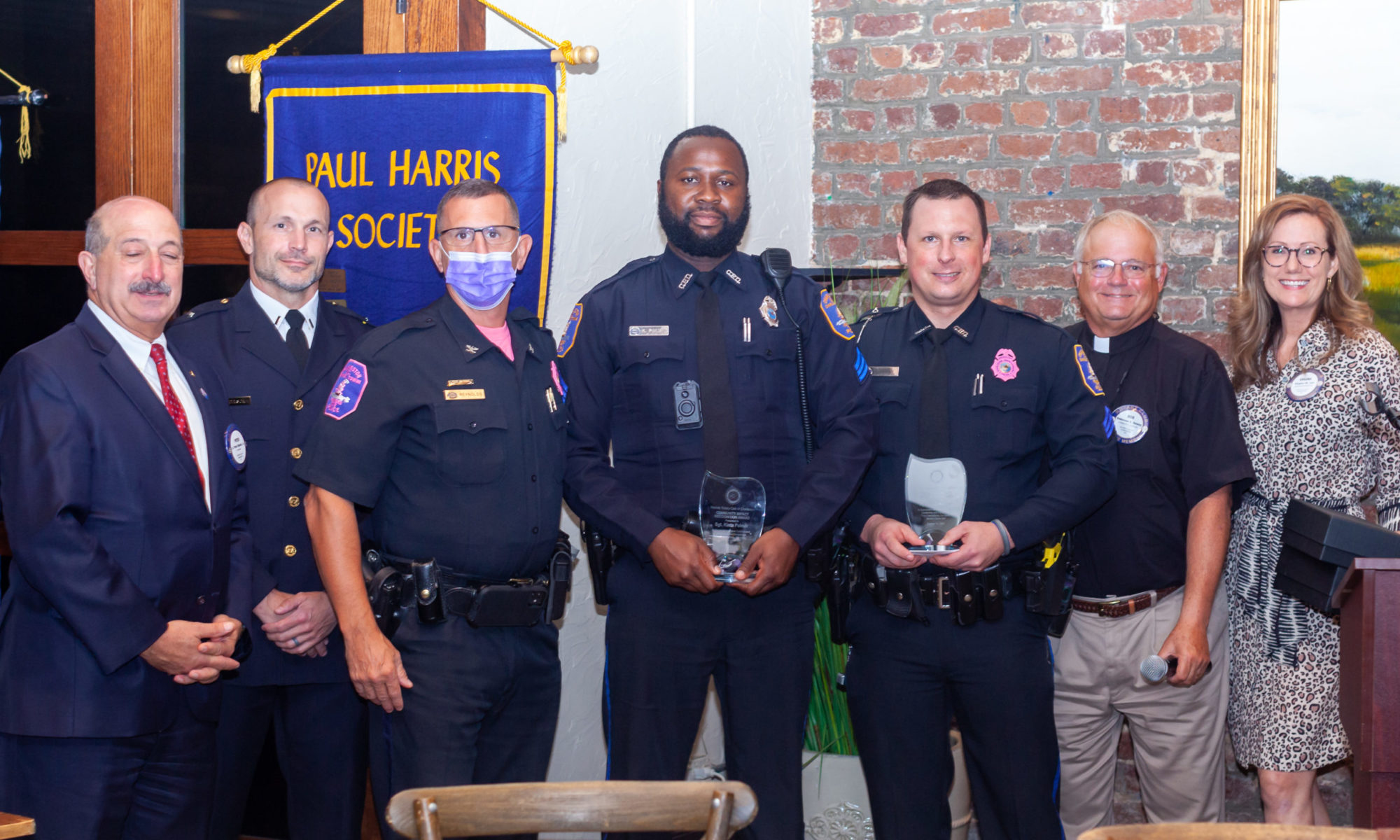If you missed the Rotary Club meeting on Tuesday, you missed quite a program!
Our meeting began with a stirring presentation of the colors by the color guard of the Washington Light Infantry. The members of the color guard wore beautiful uniforms made to be nearly perfect replicas of the original 1800’s coats and pants and displayed some of their many medals. Color guard members are Charlie Hall, Chief Master Sargent; Eddie Kornahrens Jr., Sargent Major; Perry Patrick, Major; and Fred Auld, Colonel.
The meeting’s theme was President’s Day since Tuesday, the 16th, fell between Abraham Lincoln’s February 12 birthday and George Washington’s on the 22nd. So, having a few overachieving Rotarians on our program planning committee, we actually brought Presidents Washington and Lincoln to our meeting!
Correctly and fashionably dressed in their respective eras’ finest outfits, the Presidents answered questions about politics and the difference between our time and their own. Perhaps not quite as articulate as we’ve been taught to expect, the presidents nonetheless muddled through their remarks and the membership enjoyed their presence hugely. It was, however, pointed out that the bewigged President Washington bore a remarkable resemblance to our own John Bleecker and that President Lincoln, with his stovepipe hat and beard, strongly reminded members of Jeremy Kouba. We were appropriately honored by the presidents’ appearances and appreciate the challenges and hard work their visit required.
Our program speaker continued the meeting’s patriotic theme with an overview of the Washington Light Infantry (WLI), an organization that has been continually in existence since 1807. Henry Siegling, Sr., serves as Battalion Commander of this old and distinguished militia unit that is the only surviving unit of the many volunteer militia groups that were formed in the early 1800’s by Charleston citizens. Commander Seigling led us through the rich history of the Washington Light Infantry.
In 1807, there was still an expectation that another war with Great Britain could start at any time. To ensure their safety and readiness, the citizens of Charleston formed numerous volunteer militias to defend themselves and their city should fighting renew. The Washington Light Infantry was thus formed and was named in honor of General George Washington. The Infantry continues to honor our first President and most renowned general at a military banquet held each year on his birthday.
But this is not just a ceremonial Corps. Since 1807, The Washington Light Infantry has participated as a unit in every major war this country has fought.
Shortly after its 1807 formation, the War of 1812 with Great Britain did indeed commence and the company was mustered into active service. In 1824, the corps served as a special honor guard escorting the Marquis de Lafayette to Charleston and in 1836 the Washington Light Infantry was sent to the aid of women and children who were under threat of massacre by the Seminole Indians. In 1842, this volunteer militia began its major role in the establishment of Charleston’s South Carolina Military Academy—the Citadel.
The Mexican War of 1847 saw the WLI as part of the famed Palmetto Regiment. During the Civil War, over 25% of the corps’ members were killed but those who returned were the first to form an organization designed to help the families of fallen or disabled southern soldiers, the Washington Light Infantry Charitable Association.
The militia served in varied capacities during World War I and World War II and many of its members have served in the US armed forces.
Throughout its long existence, the Washington Light Infantry has served South Carolina and the United States with honor and distinction. The corps maintains a special and much admired position in Charleston and throughout the country and as Rotarians, we were fortunate to have Commander Siegling and the Washington Light Infantry Color Guard visit us and to tell us about their exceptional history.
— Cheryl Kaynard, Keyway Committee


